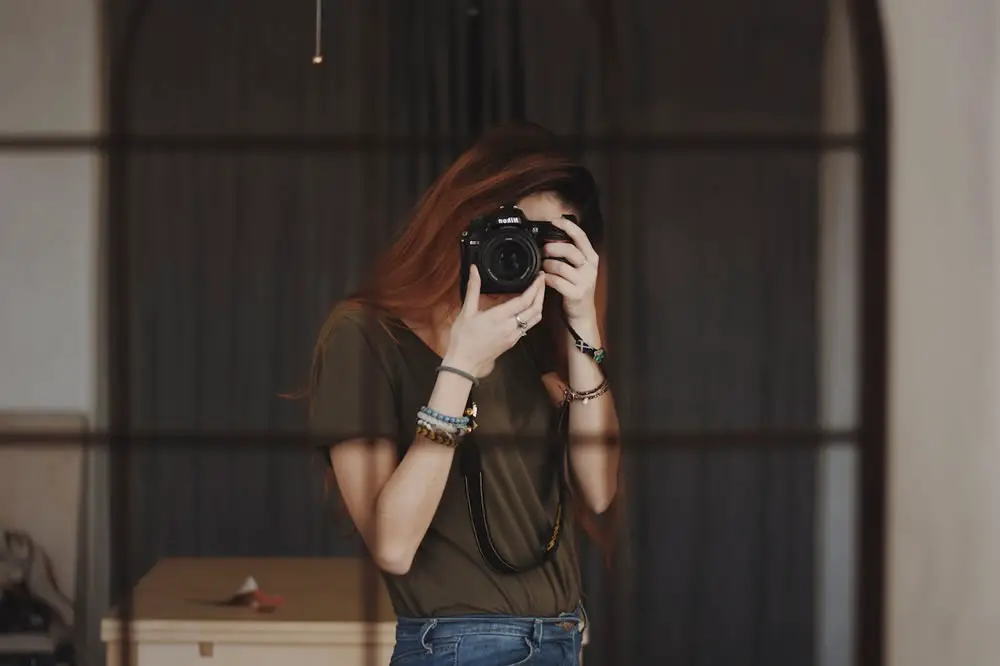[ad_1]
An image without a story is like a blank sheet of paper that doesn’t have any value.
Designing compositions with narratives can be challenging for beginner photographers who are just getting started on this career path. However, working on themed photography projects can help them improve their skills. Such projects can teach them to design consistent compositions with engaging storylines.
This article provides the top 15 creative ideas for photography projects for beginners. You will also get some basic knowledge of essential photography gear and photography tips that will help you with your photography project.
Keep reading to learn!
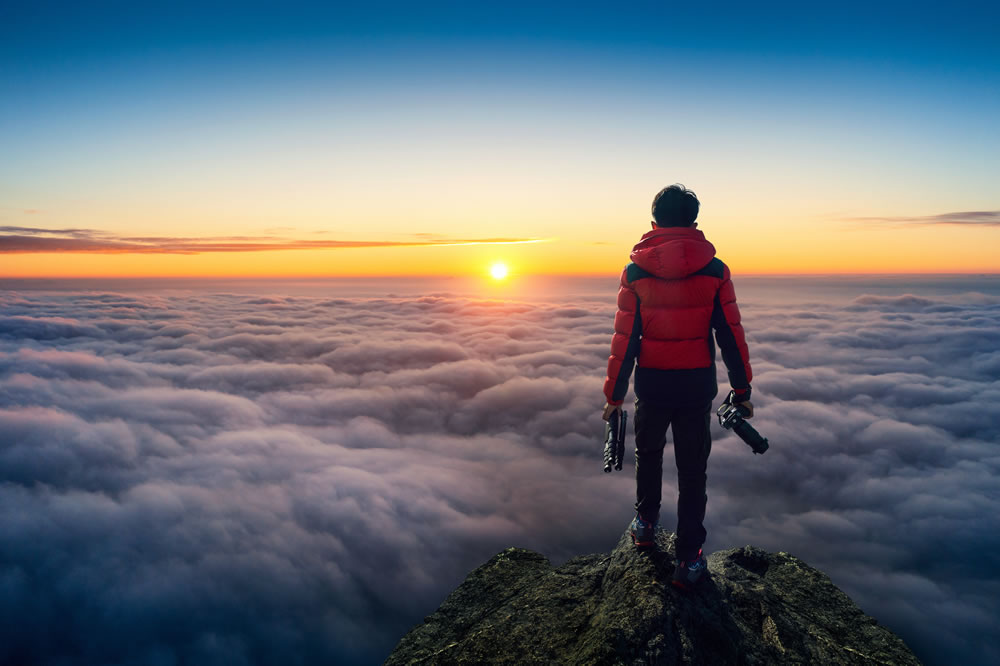
What Are Photography Projects?
Photography projects are groups of photographs arranged while maintaining a particular category, style, subject, theme, technique, or equipment. The projects can be anything the photographer can imagine working on as long as they convey a story.
For instance, the theme can be street, vintage, or landscape photography; the subject can be children, fruits, flowers, pets, or vehicles; the equipment can be a telephoto, zoom, or film camera; or the style can be lifestyle, portrait, or fashion photography.
However, a photography project doesn’t need to meet only one specific criterion. A photographer is free to incorporate multiple criteria into their project, such as street photography of pets or vintage photos of vehicles.
Working on these projects can be a great way to create a unique collection of photographs that reflect the photographers’ interests, passions, and creativity. Therefore, regardless of the type of project, the photographer’s goal is to establish consistency within the series.
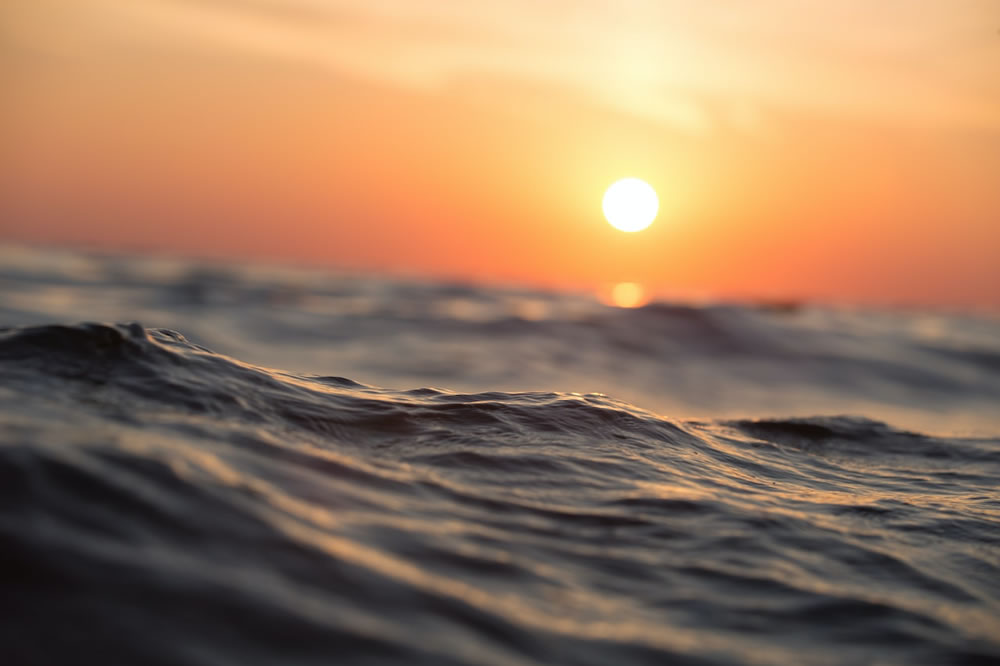
What Are the Benefits of Photography Projects?
Photography projects assist photographers in determining their niche and developing their individual photographic approach. If you are a beginner photographer, you can challenge yourself with photography projects. You can try out one week or one-month-long projects to learn photography basics. However, you can try out the 52 weeks photography project for in-depth learning.
How else can a photography project help you besides teaching you the basics of photography? Let’s learn what other benefits photography projects offer.
Asset for the portfolio
A portfolio is very important for a photographer to establish a photography career. It is the source for showing potential customers their best work. Besides, working on photography projects allows photographers to add more value to their portfolio while giving viewers an idea of their area of expertise.
Improves skills and creativity
Working on photography projects requires creativity to make the project theme or subject unique and eye-catching because hundreds and thousands of other photographers may be there working on similar projects.
However, along with creativity, the photographer needs to have certain skills, such as editing, sequencing and designing, to include their own visual style in their projects. Hence, in the process of creating something extraordinary, photographers’ skills and imagination get polished and result in producing stunning images.
Explore diverse niches
Photography projects are a great source for experimenting with different types and styles of photography. Besides, it helps beginner photographers explore diversified niches and test their abilities and strengths.
The numerous difficulties that come with photography projects also encourage photographers to step outside of their comfort zones and create extraordinary work they may have never imagined they could create one day.
Participate in competitions
Photographers can use their photography projects to participate in contests and get their work validated by experts and other photographers. This will help the photographers’ work be recognized and boost their confidence. Moreover, photographers can get funding for their future projects too.
Publish a photo book or participate in an exhibition
Photography projects can be used for commercial purposes too. Many photographers put together their photography projects to publish photo books. Since people enjoy watching stories unfold through images, these photo books are popular among photography enthusiasts.
Furthermore, photographers can use images from their projects to participate in exhibitions. They can put their work on display for viewers, and if the image manages to grab their attention, it might end up being purchased.
Top 15 Beginner Photography Project Ideas
Following are the top 15 photography project ideas for beginners that you can try for your upcoming photography projects.
1. Self-portrait photography
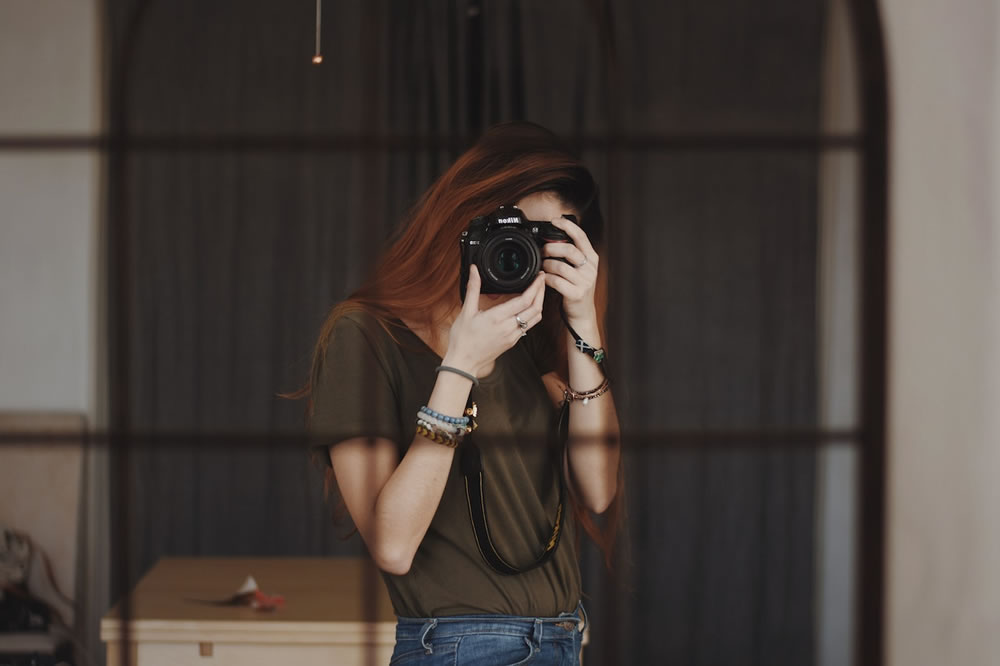
Finding subjects can be difficult at times, so why not use yourself as a subject and take self-portraits for your project?
Self-portraits can be a good theme to create your personal story. You can take pictures of yourself from various angles. For instance, mount your camera on a tripod, set a timer, and give your desired poses. Also, you can use reflective surfaces, mirrors, or still water to capture your reflection.
However, self-portraits are not limited to capturing your face and body. You can create artistic self-portrait compositions by photographing specific body parts, such as the eyes, half-face, hands, legs, or other gestures, expressions, or emotions.
2. Your furry friends (Pet) photography
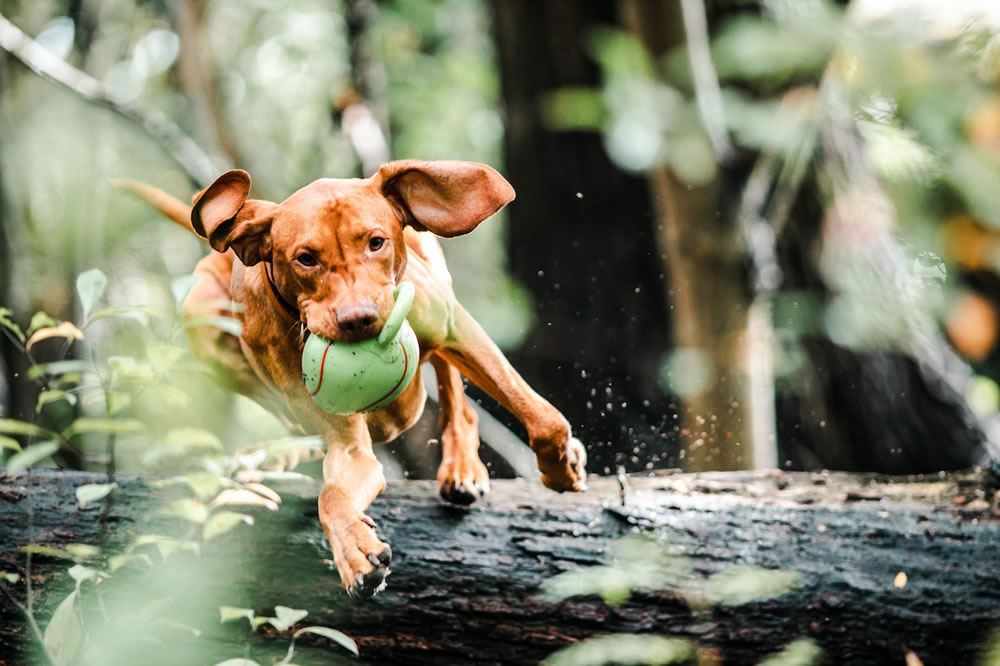
Pets like cats, dogs, hamsters, ferrets, or birds all have their own charm. People love to see pet photographs as they are mostly candid and genuine. So, shooting pets can be a fun photography project for beginners.
Similar to humans, pets’ eyes are a gateway to their souls. Their eyes express their playful nature and emotions the most. Hence, when shooting pets, keep the focus on their eyes. Make sure to ensure their comfort as well. Use their favorite snacks or toys as a treat to keep them calm and happy.
Moreover, it would be best if you photographed them in natural light. To capture their natural activities, try to maintain silence and take pictures from a distance.
3. Panoramic photos
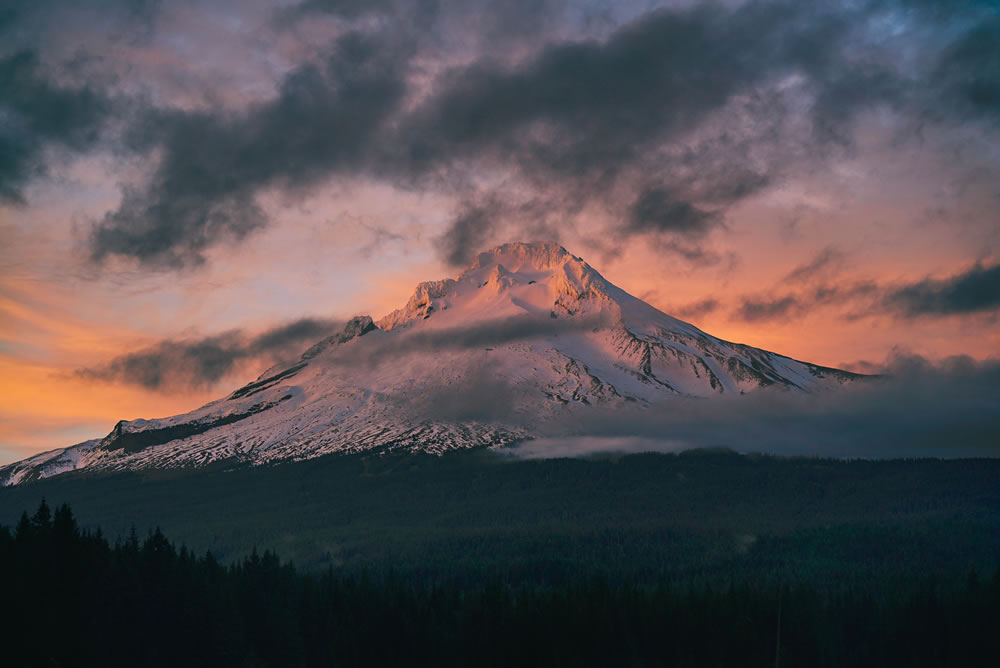
If you are interested in photographing landscapes, consider using the panoramic photography technique for your project. Although telephoto or wide-angle lenses can capture distant landscapes or wide-angle images, they cannot provide the same field of view as panorama photos. Hence, working on panoramic photography projects can give your project a unique perspective.
The shooting process for panoramas is different from other photography types. You have to position your camera vertically for the best results and maintain the level of the camera. For that, you must use a sturdy tripod.
Besides, panoramic images require the merging of multiple images. Therefore, you have to shoot each scene in such a way that one-third or 15–30% of the scenes overlap with the adjacent scenes to ensure there are no gaps in your images. Also, moving the panning direction from left to right makes merging easier for photo stitching software.
4. Sunrise & Sunset photos
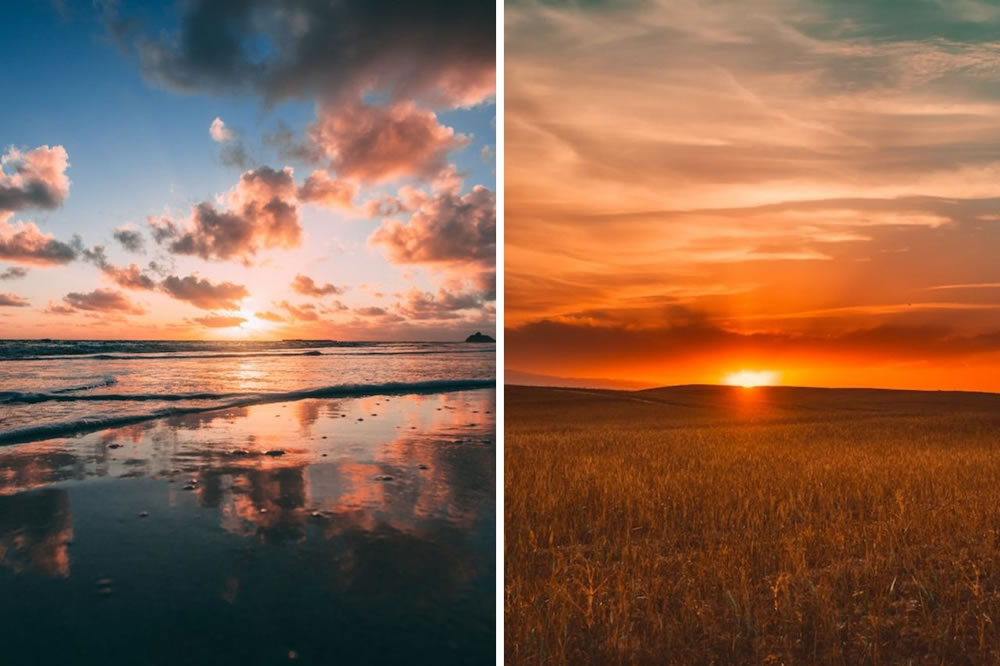
Sunrise and sunset photography can create a fantastic project theme for landscape photography enthusiasts. The location’s position, the cloud’s structure, the foreground elements—everything together- make every sunset and sunrise photograph unique.
When shooting sunset or sunrise, select a location from which you will get an unobstructed view of the horizon. It’s best to shoot from the top of a hill or mountain because you can use the mountain, trees, or ocean as your foreground element to make the image aesthetic.
Want to add some drama to your sunset or sunrise photographs?
- Use manual camera settings, such as manual focus, high aperture for greater depth of field, fast shutter speed, medium ISO, etc.
- Make the foreground elements or clouds underexposed.
- Shoot in bizarre weather like a sky filled with storm clouds.
- Design the composition according to the rule of thirds.
5. Cityscapes
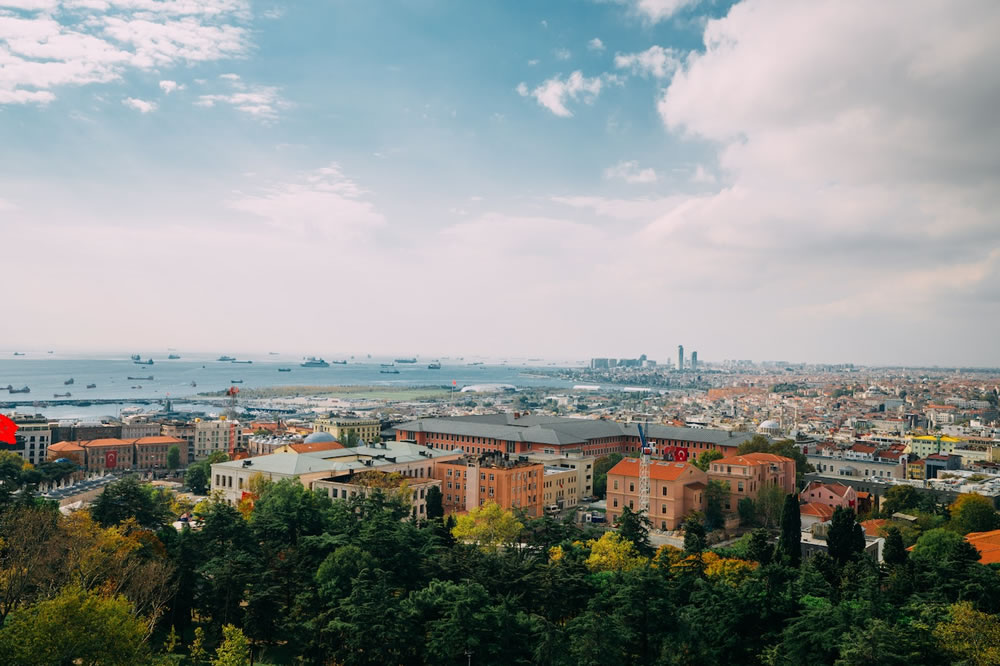
If you have a wide-angle lens, telephoto lens, or drone, you can try shooting cityscapes for your photo project. The diverse skylines, streets, lakes, rivers, hovering skyscrapers, bridges, and expressways are all part of the cityscapes that give a different aesthetic to the photographs.
You can experiment with different vantage points to make the location unique. For instance, you can shoot from street level, the top of a building, or along the waterfront. Especially at night, when the entire city is lit up, the city lights stand out against the dark sky, and the reflection of the city along the waterfront appears the best.
Moreover, cityscapes look their best in all types of photography, whether it be abstract, during the golden hour, in bad weather, at night, or during the day. All you need to do is ensure that the image is clear of all distractions to shoot breathtaking cityscapes.
6. Water photography (Rain, River, Ocean, etc.)
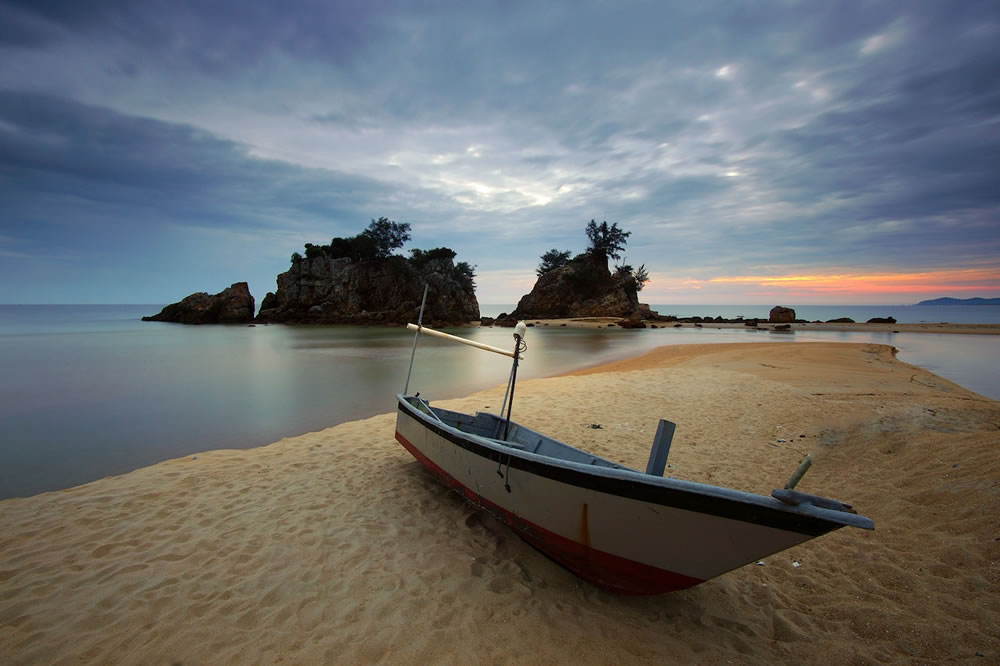
Despite having no shape or color, water can captivate people with its various forms of beauty. The movement or flow of water, its interaction with light, and its location make all the difference.
You can use rainfall, ocean waves, spring flow, or reflections of sunlight on the water to design different themes and create amazing stories. For example, shooting raindrops can be a great macro photography project for beginners.
Some creative ideas for water photography are-
- Water droplets on a glass
- Dropping objects on still water to create a splash effect
- Waves crashing against a seawall or on the shore
- Hair flipping in a pool, river, or beach
- Spring water flowing down hills
- Reflection of sky or landscape in still water bodies
Note: Use a waterproof shield or plastic bag to protect the camera from getting damaged. In case the lens gets wet, keep a microfiber cloth nearby to wipe it off.
7. Food photography

If you can’t decide on the subject or theme for your project, go for food photography. This can be an excellent photography idea at home, as you neither have to travel long distances like landscape photographers nor stay awake for the whole night to shoot the sunrise.
Natural lighting is best for photographing food. But if you have a strobe light, you can use that too. Just make sure to keep the background simple. To give the food items a pop of color, you can use their key ingredients as props.
You can also try the following to make the images more tempting:
- Angles and vantage points
- Flat lay shots
- Low angle shots
- Side shots
- Macro or close-up shots
- 45° shots
- 75° shots
- Add motions
- Splashing
- Sprinkling
- Food in the air
- Dripping or melting
- Composition style
- Center framing
- Rule of thirds
- Rule of odds
- Golden triangle
However, if you don’t want to deal with the hassle of cooking or spend money on fancy tableware, you can photograph food items at restaurants.
8. Black & white photography
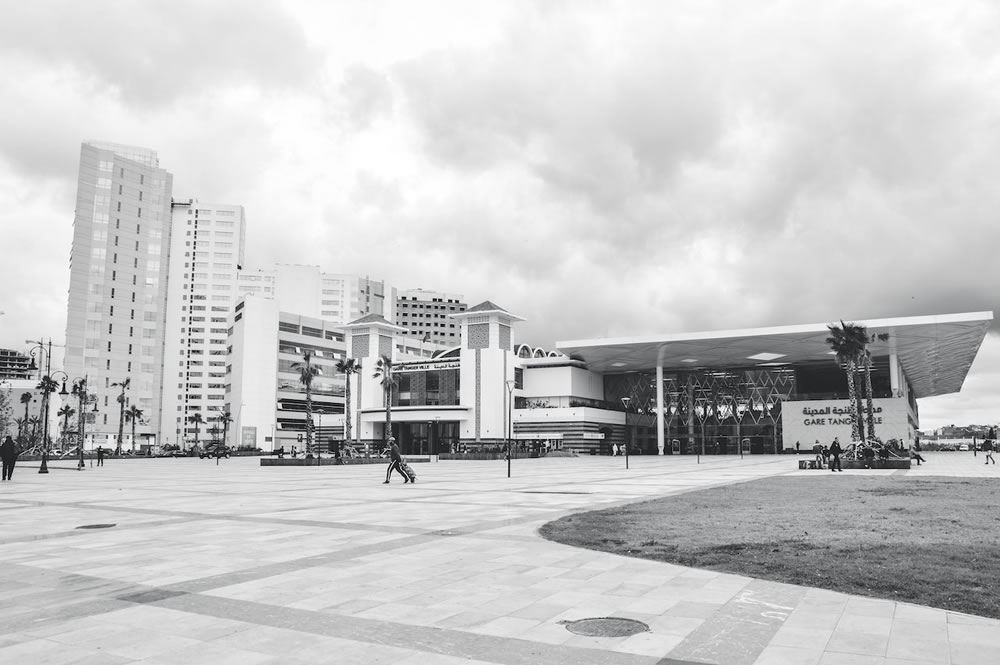
If you want to hit the emotions of your viewers with your project, black-and-white photography can be a great initiative. This vintage-style monochrome photography technique makes the viewers nostalgic and gives them the feeling of traveling to the past.
Moreover, the different shades of gray help to bring the viewers’ focus to the subject, shapes, texture, etc.—without causing any distraction. You can shoot in the camera’s black-and-white mode or convert your images to black-and-white with the help of photo editing software.
9. Abstract photography
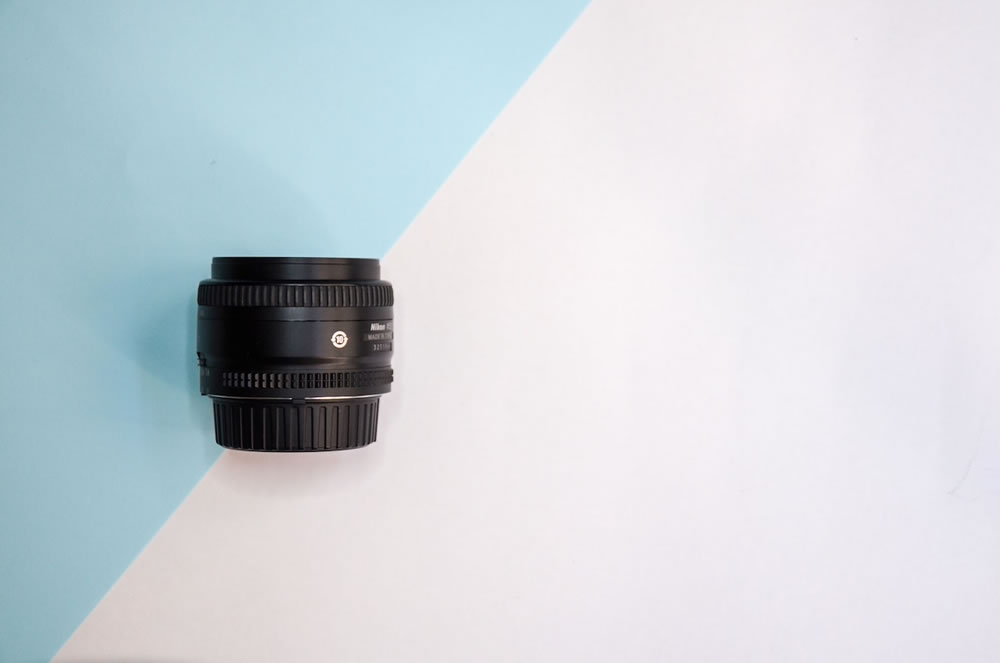
If you’re looking for unusual photography ideas for your project, try abstract photography. People love to see mysteries. And mystery is a key component of abstract images. However, it can be challenging because maintaining visual balance, proportion, appropriate lighting, angle of view, and other elements is essential, along with using a lot of creativity.
You can try capturing motion, experimenting with everyday objects or places, or shooting through objects such as glass, water, or objects with different shapes. Abstract photography ideas can come anytime and anywhere. Since it is not possible to always carry a camera, you can try phone photography.
10. Photograph house plants & flowers
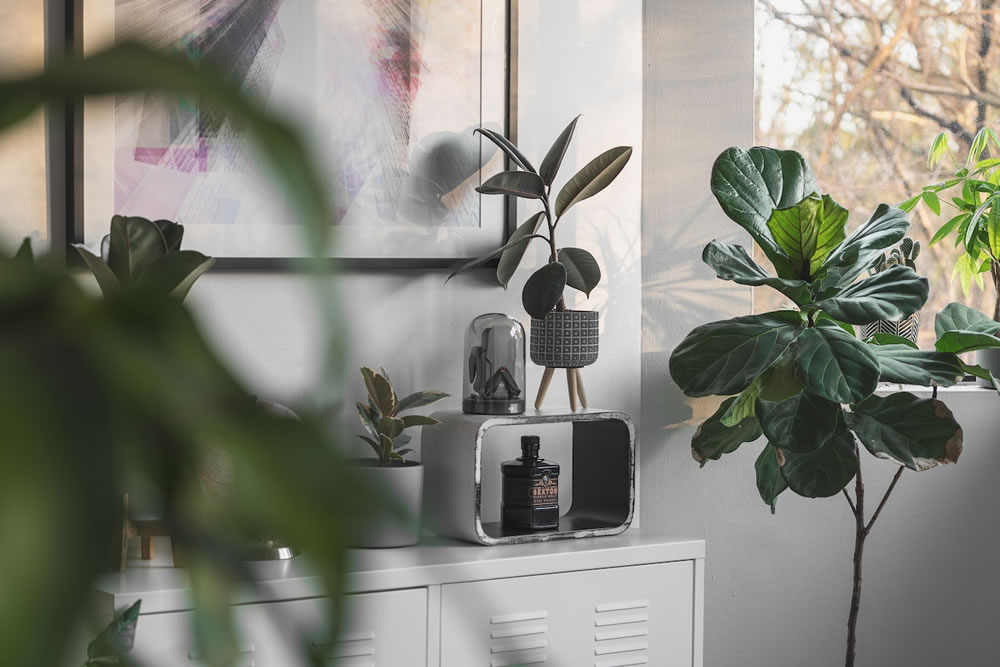
Do you need ideas for indoor photography projects for beginners? Try out photographing house plants. You can document the growth of your house plants, like the first time you planted them, how they sprout, bear flowers, and so on.
You can also search around your neighborhood, the gardens of your friends and family, or flower fields to look for different types of flowers. Photograph them during the golden hour or take macro shots with water droplets on the petals or leaves to give them a unique perspective.
11. Extreme weather conditions
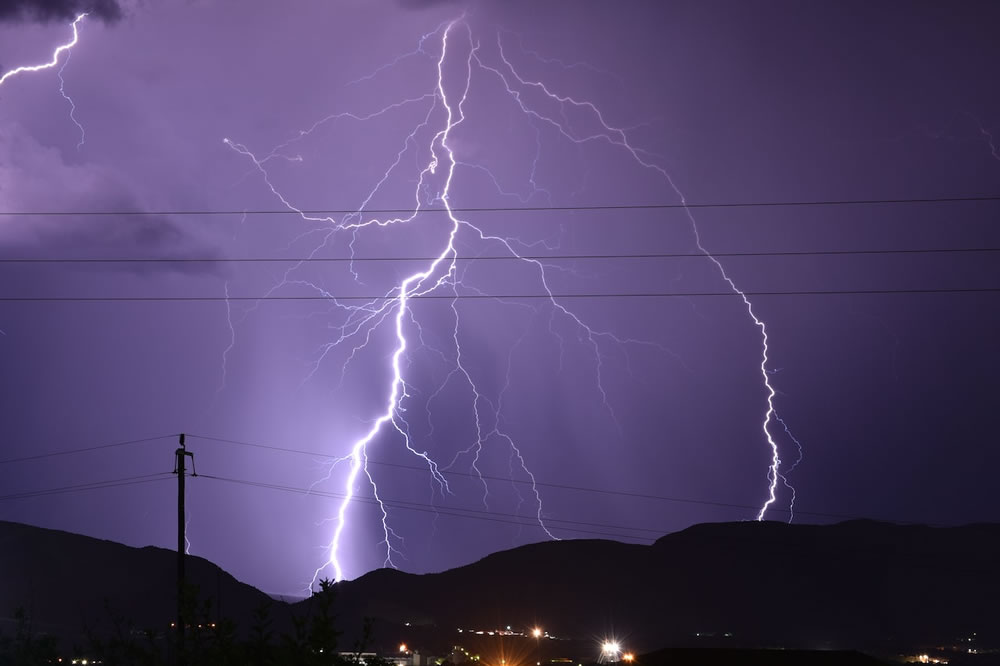
Unexpected dramatic events result from extreme weather conditions, such as thunderstorms, wildfires, tornadoes, snowstorms, sandstorms, etc. Photographing such weather conditions is highly recommended if you want to add thrill to your photography project.
Usually, these visuals are rare for ordinary viewers. That’s why it’s an effective source for making people stun with dramatic, jaw-dropping natural calamities.
12. The sky is the limit
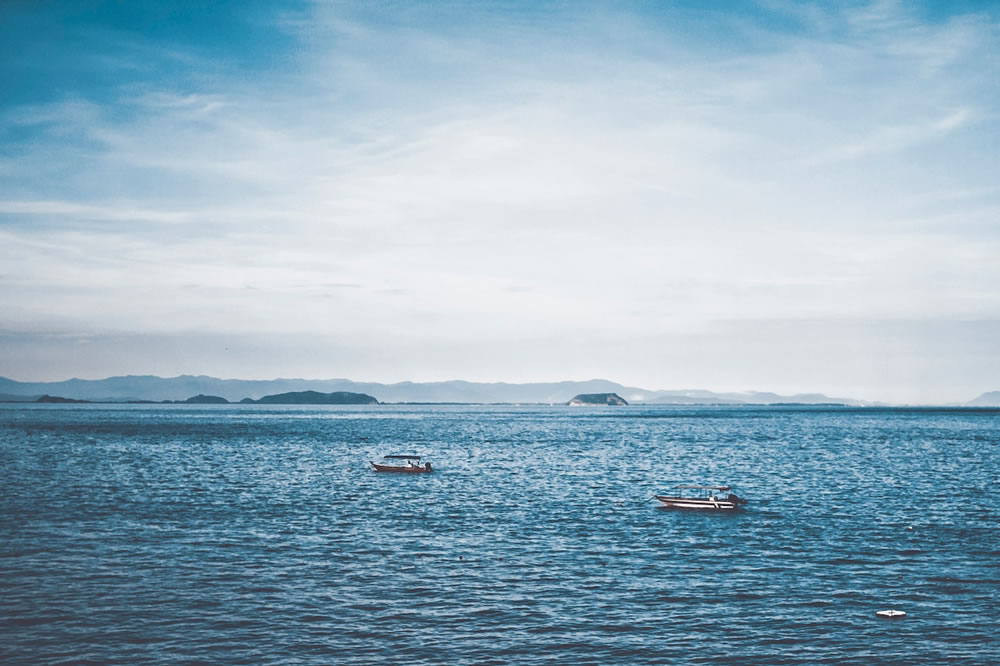
Photographing the sky can be considered an easy photography project for beginners. Every day, different patterns of clouds form. Depending on the lighting, the beauty of these clouds appears differently. You can combine sky photography with cityscapes, landscapes, weather, and other types of photography.
The golden hour is the ideal time to capture dramatic sky photography. During this period of the day, the sun remains closer to the horizon, giving the sky a yellow, orange, and red look, which multiplies the beauty of the sky tenfold.
13. Shadows or silhouette photography
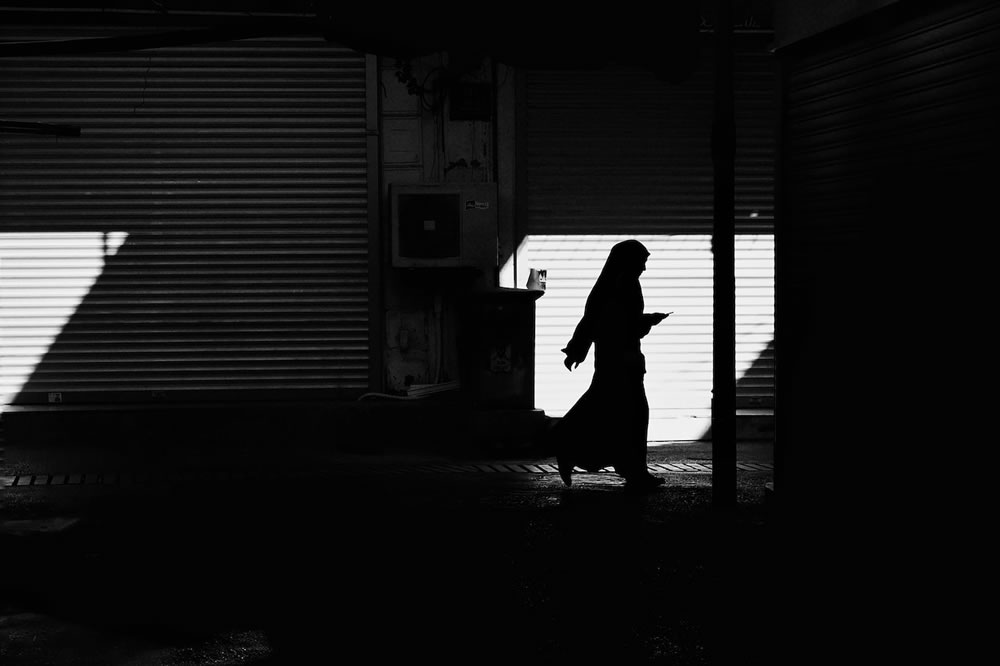
Shadow photography can be combined with other photographic styles, such as self-portraits, abstracts, or black-and-white photography. You can create an entire series of shadow images for your projects, be it by photographing your own shadow on the wall or using patterns created using grids, fabric, or fences.
You can add mystery to your self-portraits by casting shadows on your face or creating silhouettes, which will only make the shape of your body visible. This photography style is also suitable for architectural photography. The change in the position of the sun creates different shapes and patterns. You can use them to give the images a unique perspective.
14. Find Cobwebs
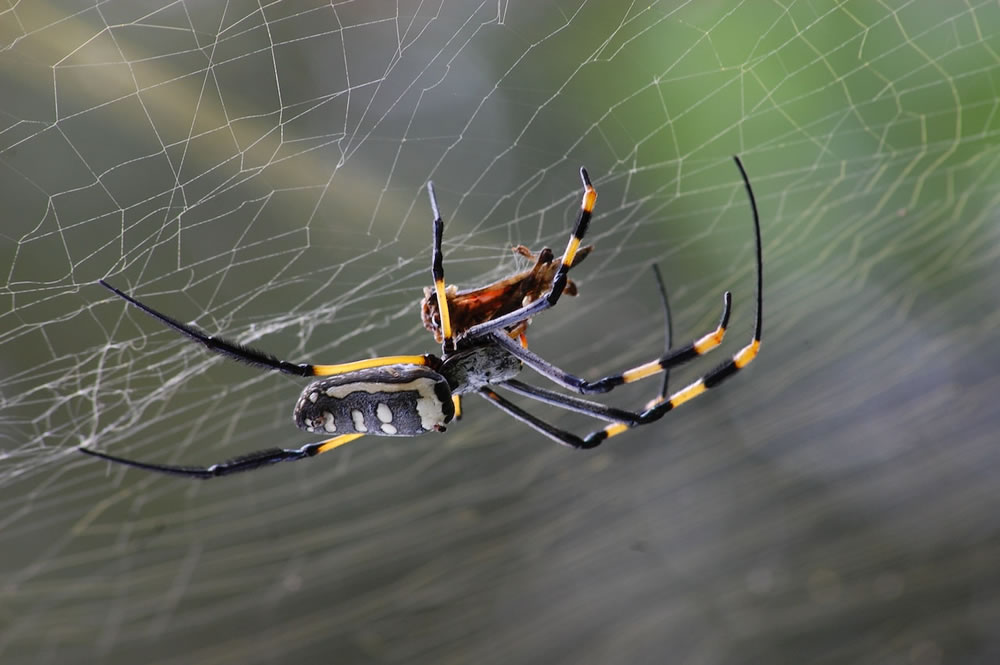
One of the most intriguing forms of natural architecture is spider webs. These webs can be a good subject for both macro and mobile photography ideas for beginners.
These fascinating webs can be found in different sizes and patterns. However, only the web could look flat and dull. So, to give the webs an intriguing abstract effect, keep an eye out for webs that have trapped insects or other elements like dew, sunlight, etc.
15. Everyday moments
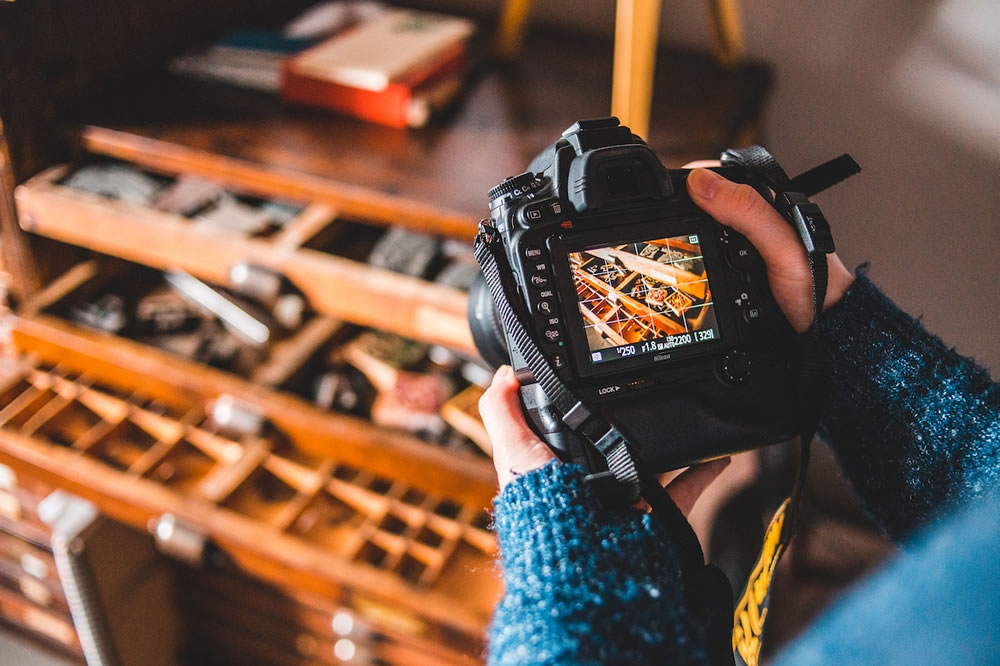
Lifestyle photography or photographing everyday moments can add a slice of life to your photography project. You can capture genuine moments with family members, friends, pets, or fun times with siblings.
Photographing daily moments can work as an excellent photography project to do at home for beginners. It can keep you motivated to shoot regularly and improve your photography skills. Besides, you can preserve these precious memories for the future.
If you prefer visual learning, here is a video with tips. You can watch it here:
Essential Pieces Of Gear Every Beginner Photographer Needs
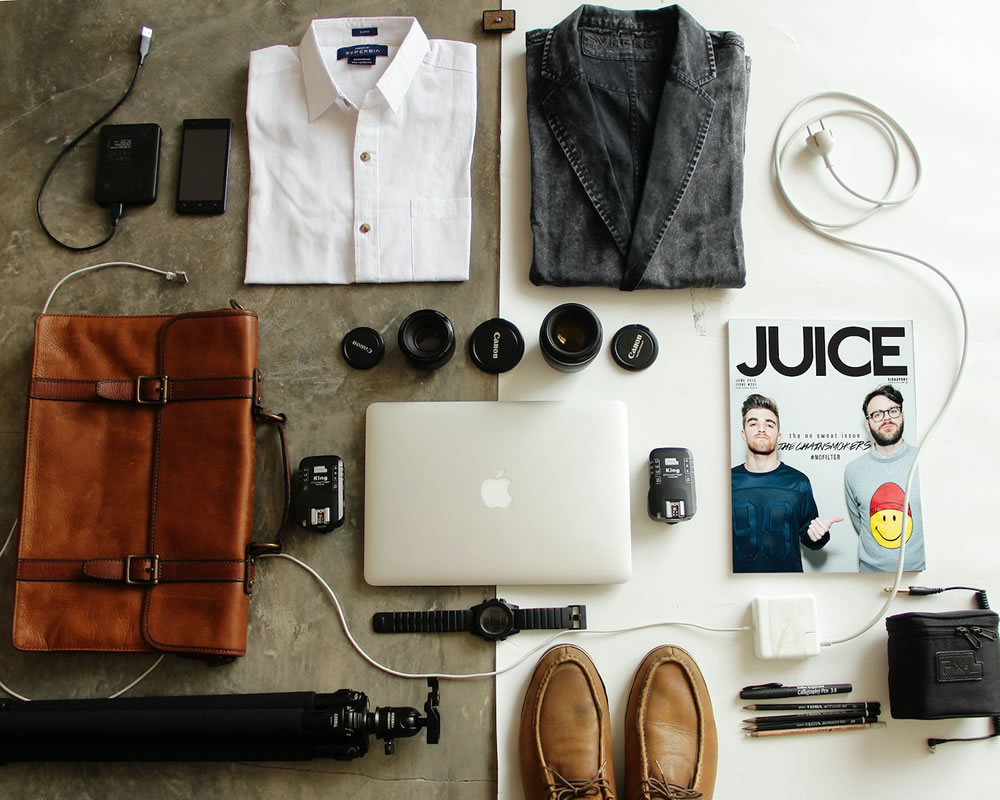
Photography can be a lengthy process at times. Hence, carrying some essential photography equipment can help prevent casualties in emergency situations.
Let’s check out what equipment do you need as a beginner photographer.
The all-rounder 50 mm lens
The best lens for a beginner to use when starting with photography is the 50mm lens. The focal length of this lens falls somewhere between a wide-angle and a telephoto lens.
It is appropriate for almost all types of photography, including candid, landscape, street, panorama, and portrait shots. Therefore, you won’t need to swap lenses between shoots if you have a 50mm lens.
Memory card
It takes several attempts to capture the perfect image. Besides, high-resolution images take up a lot of space. Therefore, carrying an extra memory card is essential because you wouldn’t want to go through all of your photos and delete some of them to free up space.
Flash or manual flash
Images may not turn out exactly as you had hoped due to a lack of light. That’s why it’s a good idea to bring a portable strobe or manual flash along with your photography gear to meet your lighting needs. The benefit of using a manual flash is that you can control the light intensity despite your camera settings.
Card Reader
A card reader helps move pictures from the camera to your hard drive or computer faster than a USB cable. Besides, you don’t have to worry about your camera’s battery running out or not using the camera during the image-transferring process.
Flash Drive or hard disk
Carrying a flash drive or hard disk is important for photographers whose projects require extensive travel over a long period of time. You can keep a backup of your photographs in case your memory card gets damaged or pictures get deleted accidentally.
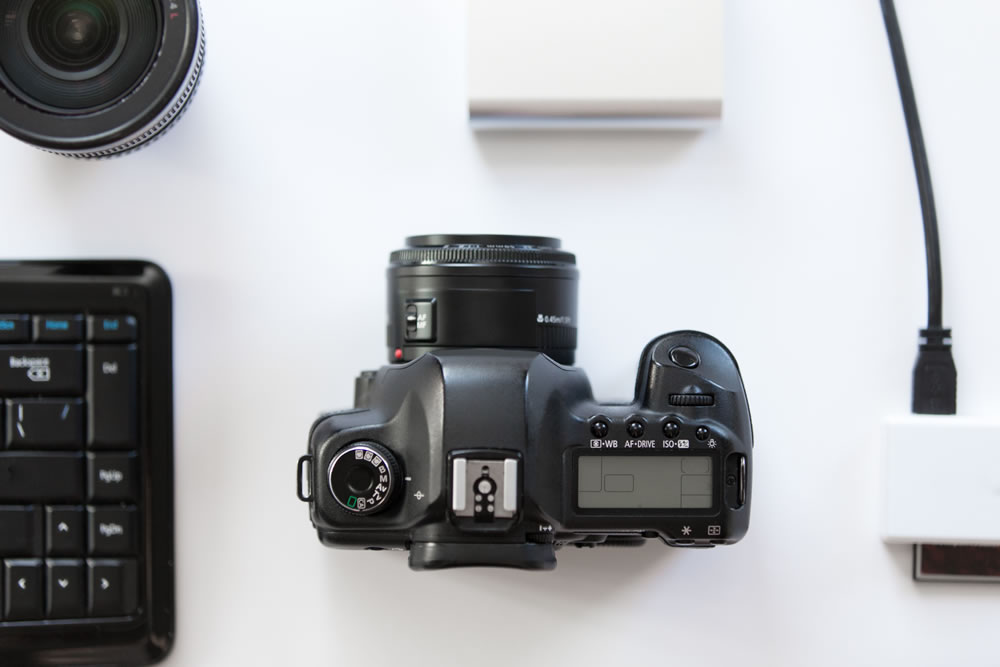
Essential photography tips for beginners
The following are some helpful photography tips for beginners photographers that will help them with their photography projects.
Use an existing camera or phone
The success of photography depends on a photographer’s ability to design effective compositions. Therefore, as a beginner, you should practice taking photos with whatever camera or smartphone you own rather than investing in a high-tech camera.
No matter how advanced your camera or lens is, keep in mind that your photos won’t turn out well until you have mastered the fundamentals of photography.
Experiment with and without flash
Flash is a great way to add more light if the composition’s frame is too dark. However, the improper use of flash can sometimes cause a washed-out effect on the images. Also, if the flash directly hits your subject’s eyes, it can cause a red-eye effect. So, take photos with and without flash to see which one looks best.
Try something innovative
Usual or straightforward photographs are boring. They lack elements that can stimulate the viewer’s attention or emotion. So it’s important to think differently and try photographing from a different perspective. You can experiment with various vantage points, angles, and compositional rules, which viewers usually don’t get to see on their own.
Try to use an ultra-wide, macro, mid, or long-range lens
You can experiment with different categories of lenses, such as taking close-up shots with a macro lens, landscape shots with a wide-angle or telephoto lens, and so on. As a beginner photographer, you should start sharpening your lens with techniques while experimenting with different lenses.
Try to use natural light
Whether your photography project is based indoors or outdoors, natural light is always the best light source. Although you have complete control over the position and intensity of artificial lights, there is no substitute for the realistic feel that comes from natural light. Hence, make an effort to use natural light whenever you can.
Spend time with other photographers
Every photographer has some knowledge to offer. Meet with other photographers and spend time with them to learn about their photography techniques. You can collaborate with them to explore the various photography techniques they have expertise in and practice with their gear. This will strengthen your networking while also assisting you in developing your skills.
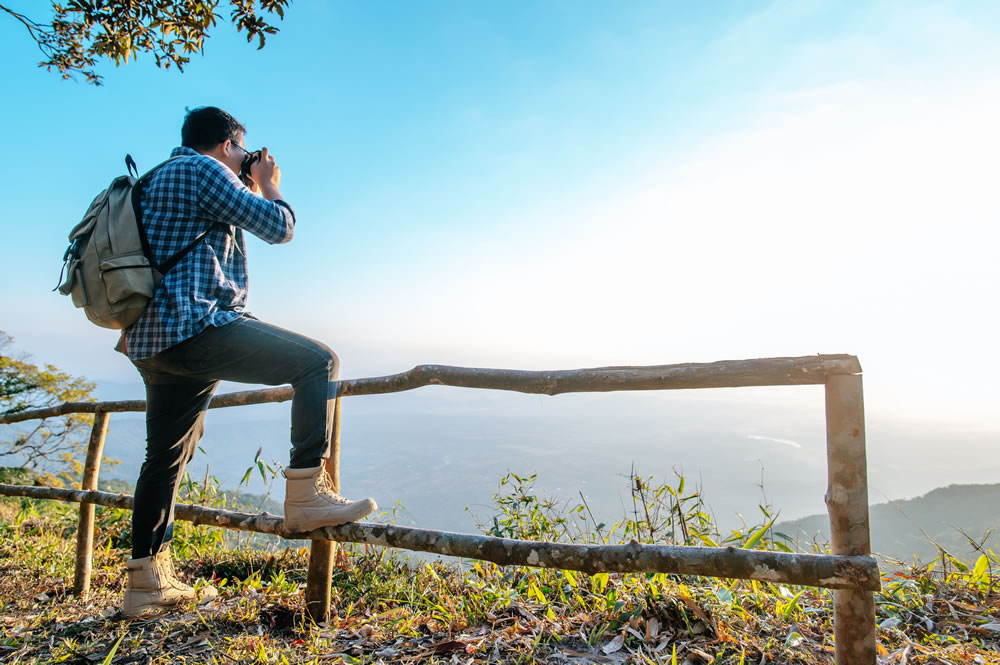
Final Verdict
Every type of photography requires certain equipment, location availability, the photographer’s level of expertise, and so on. Considering all these aspects, we have stated the above photography project ideas.
Hopefully, this article has helped you generate ideas for your photography project. Remember, whatever theme you choose, complete it in a fun-loving way.
Author: Lisa Rose
Related Articles:
[ad_2]
